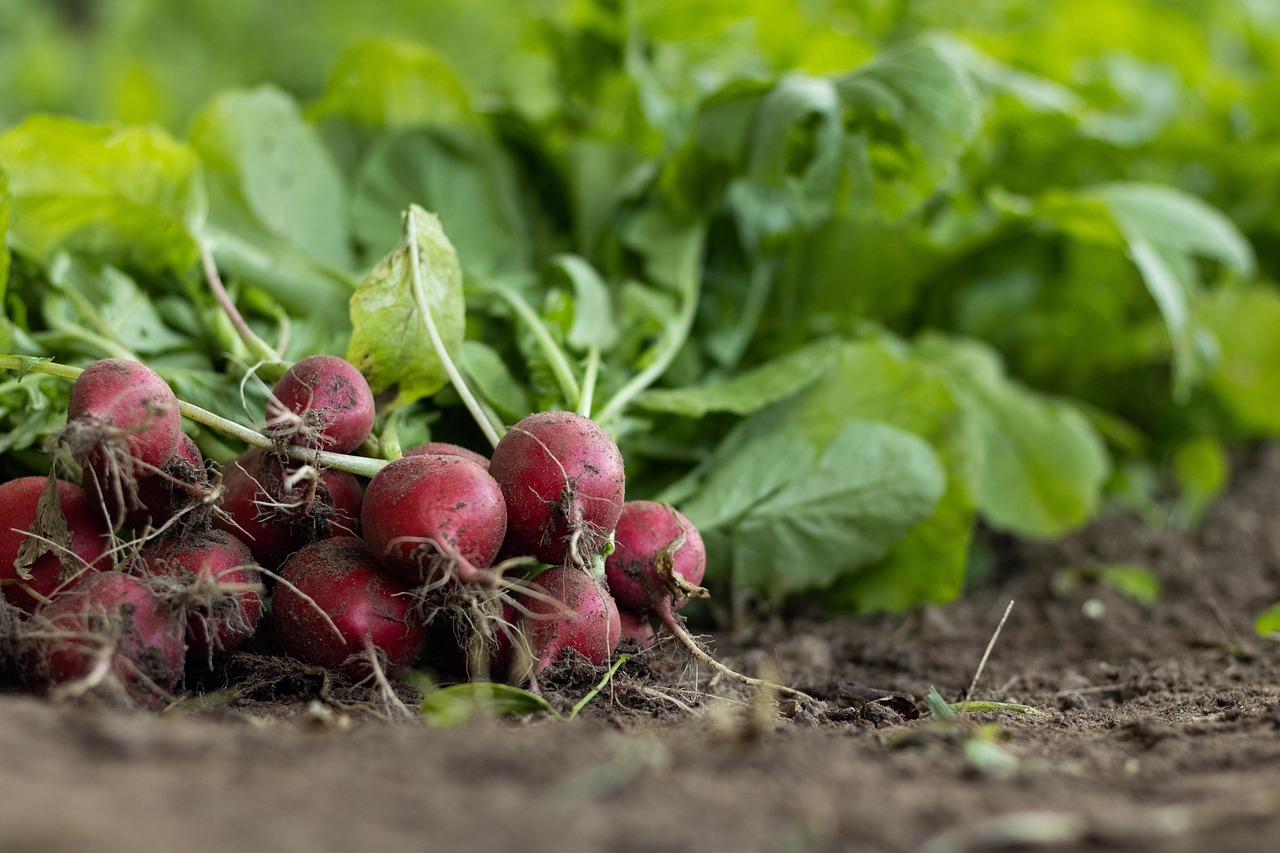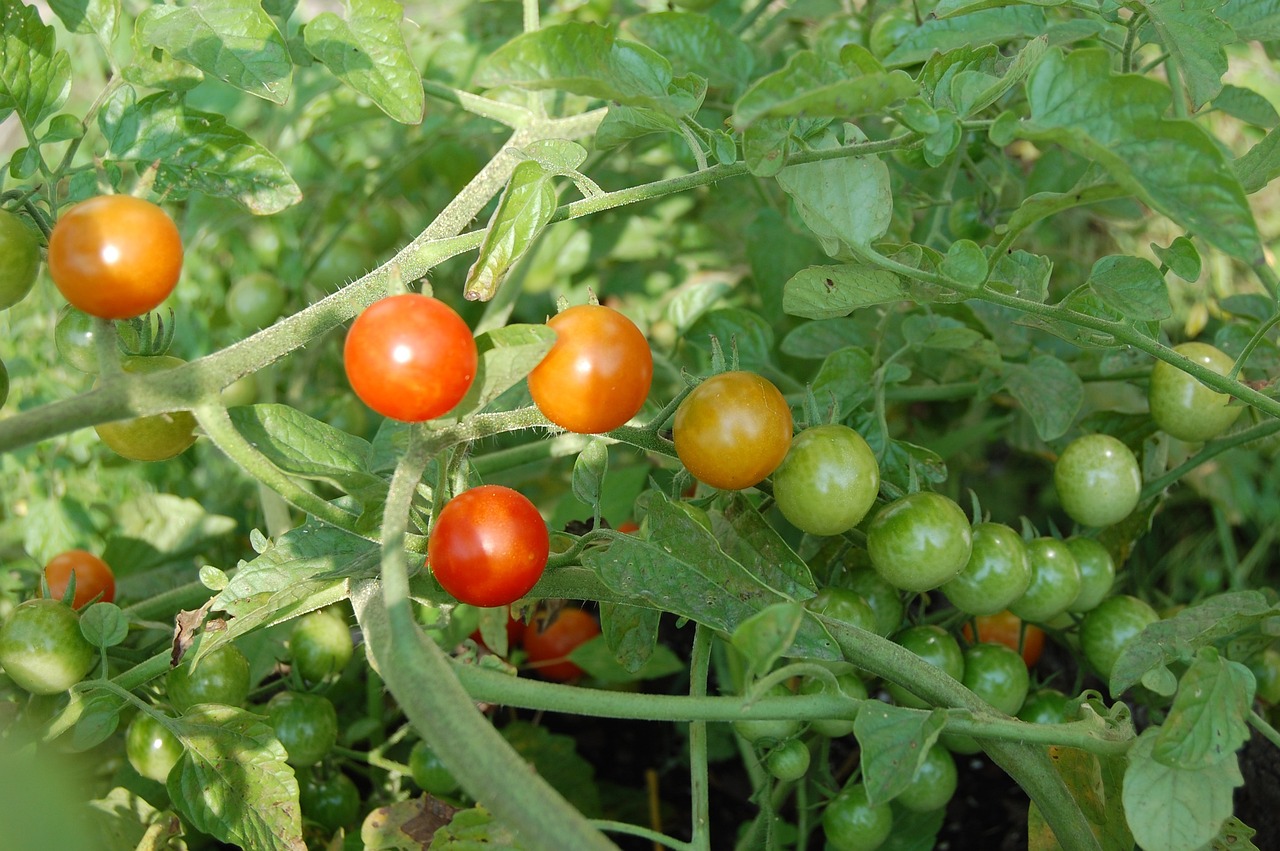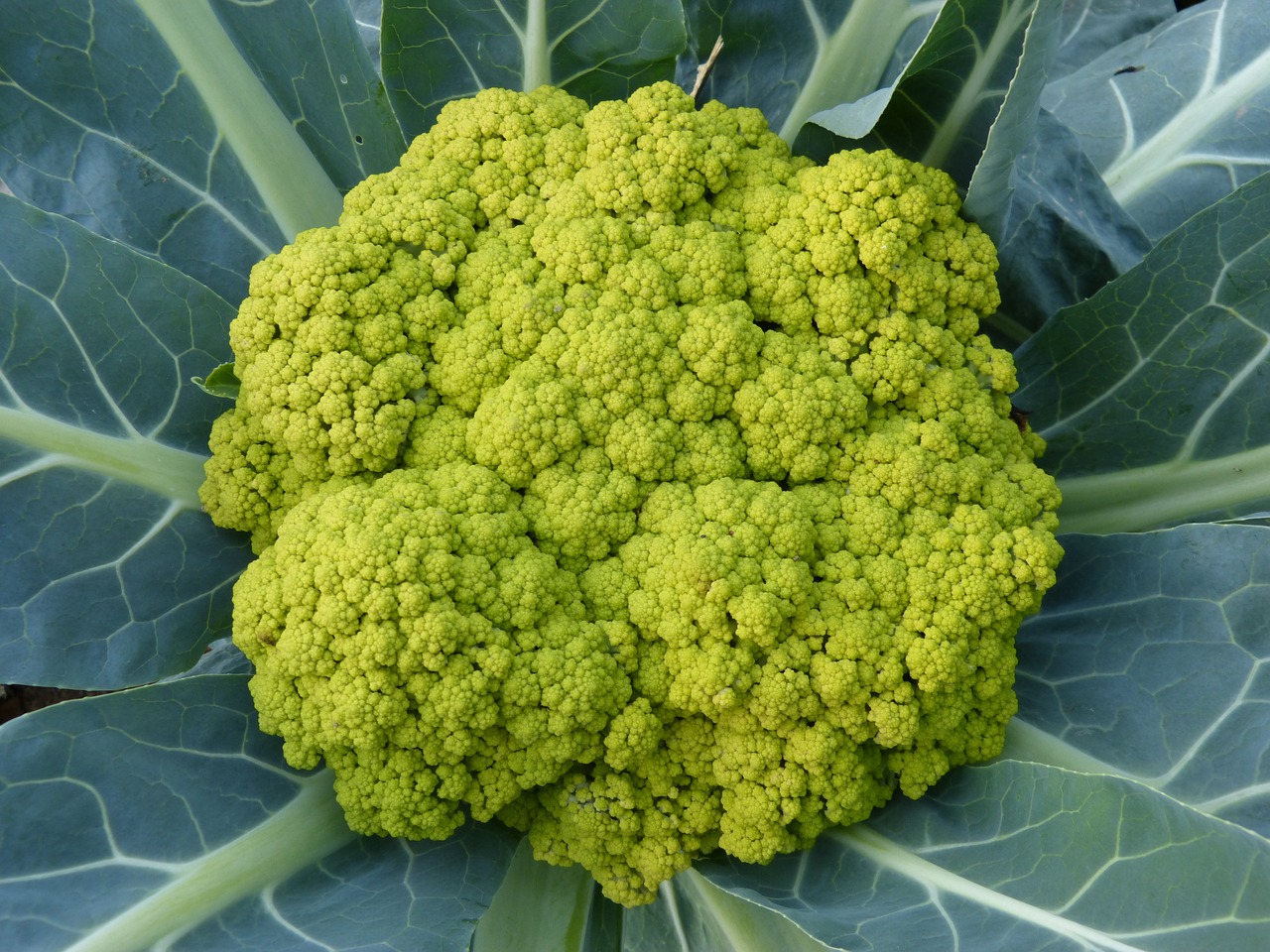For a novice gardener, radishes are a perfect choice among many vegetables to start with. As long as radishes are grown with the right conditions provided, they easily thrive and your harvest will be ready in just 3-5 weeks depending on the variety you are growing.
Radishes are also nutritious and will provide you with a fresh supply of these succulent root vegetables. Below is an explicit guide on how to grow and care for radishes:
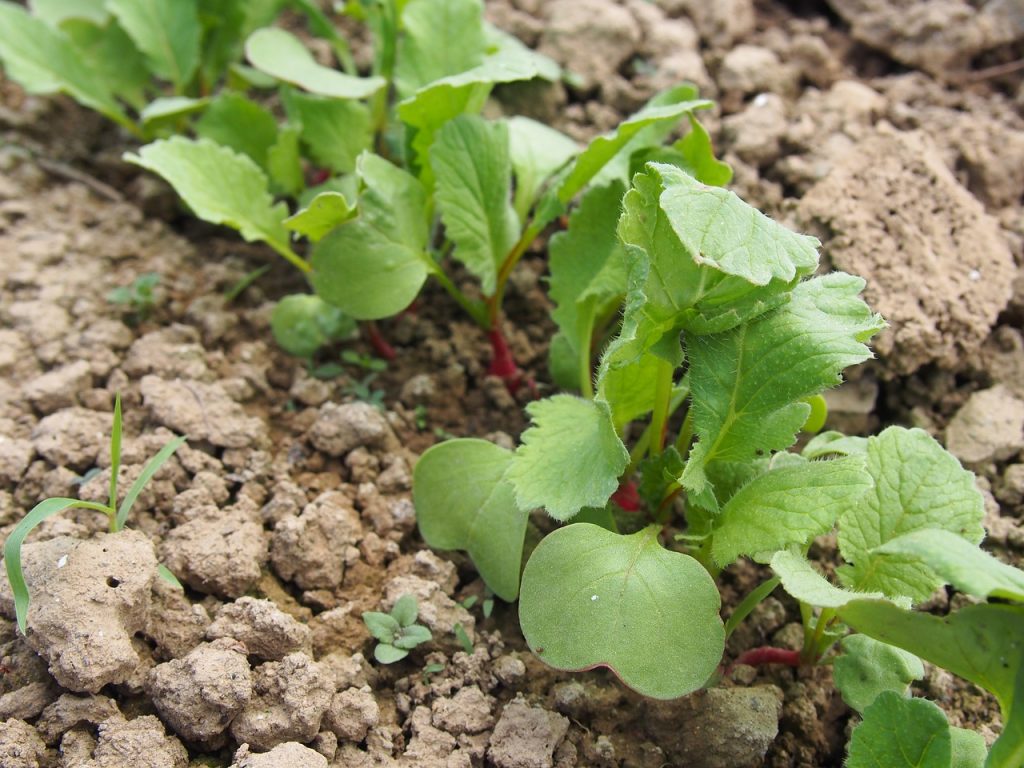
Description
Radishes (Raphanus sativus) are a type of root vegetable belonging to the mustard family Brassicaceae. They are grown for their succulent tap roots which typically have a vibrant red skin, though there are also white, pink, purple and black varieties. They usually have a round or elongated shape, with white flesh inside.
When fresh, radishes are crisp and crunchy, similar to a carrot or turnip. This texture makes them a popular addition to salads and vegetable trays. They are low in calories and rich in nutrients. They contain vitamin C, fiber, potassium, and various antioxidants, making them a healthy addition to your diet.
| Botanical name: Raphanus sativus | Propagation: Seeds |
| Common name: Radish | Soil type: Loamy |
| Family: Brassicaceae | Soil pH: 5.5-7.0 |
| Plant type: Annual, Biennial | Temperature: 55°F to 75°F |
| Hardiness zones: USDA zones 2-11 | Light: Full sun, partial shade |
| Mature size: 6-8in. tall | Spacing: 1-2in. |
| Root color: Red, white, pink, purple, black | Pollination: Insects |
| Time to harvest: 3-5 weeks | Toxicity: Non toxic |
| Native area: Asia |
Common Radish varieties to grow
Cherry Belle: This is one of the most popular varieties, known for its round, bright red roots and crisp, white flesh.
Daikon: Daikon radishes are large, white radishes with a mild flavor. They are commonly used in Asian cuisines, both raw and cooked, and are often grated or thinly sliced.
French Breakfast: This variety has an elongated shape, typically red with a white tip. It has a slightly milder flavor compared to some other varieties and is often used in salads or as a garnish.
White Icicle: As the name suggests, this radish variety has a long, slender shape and a white color. It has a slightly milder flavor compared to red radishes and is often used in salads or pickled.
Saxa: Saxa radishes are small, round, and bright red. They have a crisp texture and a slightly spicy flavor, making them a popular choice for salads and snacks.
Temperature requirements
Radishes prefer cooler temperatures for optimal growth. The ideal daytime temperature range for growing radishes is between 55°F to 75°F (13°C to 24°C). Nighttime temperatures can drop a bit lower, ideally between 45°F to 65°F (7°C to 18°C).
High temperatures can cause radishes to bolt, meaning they send up flower stalks prematurely. This usually happens when temperatures consistently exceed 75°F (24°C). Bolting can result in poor root development and bitter-tasting radishes.
While radishes prefer cool temperatures, they can tolerate light frosts and even thrive in cooler spring or fall weather.
Soil requirements
Radishes prefer well-drained soil that allows excess water to drain away quickly. Soggy or waterlogged soil can lead to root rot and other problems. Ensure that the soil has good drainage to prevent waterlogging.
Radishes grow best in loamy soil, which is a balanced mixture of sand, silt, and clay. Loamy soil provides good drainage while retaining enough moisture for the plants to thrive. If your soil is heavy clay or sandy, you can improve its texture by adding organic matter such as compost or well-rotted manure.
Soil should be fertile with slightly acidic pH levels ranging from 5.5-7.0. You can test the pH of your soil using a soil testing kit available at garden centers or through your local agricultural extension service. If necessary, you can adjust the pH by adding lime to raise it or sulfur to lower it.
Light/Sun requirements
Radishes grow best in full sun conditions, where they receive ample direct sunlight throughout the day. This encourages robust growth and helps prevent issues such as bolting.
In regions with particularly hot summers, providing radishes with some afternoon shade can help prevent the soil from drying out too quickly and reduce stress on the plants. Partial shade can also be useful during the early stages of growth, especially when temperatures are warmer, to prevent the soil from overheating and drying out, which can inhibit germination.
When to plant Radishes
In regions with cold winters, you can typically start planting radishes as soon as the soil can be worked in early spring.
If you live in a region with hot summers, plant radishes in late summer for a fall harvest. Aim to plant radishes 4-6 weeks before the first expected frost date in your region. This timing allows the radishes to mature during the cooler temperatures of autumn.
To extend your radish harvest, consider planting successive crops every 1 to 2 weeks during the cooler months. This staggered planting schedule ensures a continuous supply of fresh radishes throughout the season.
Garden preparation
Remove any weeds, rocks, or debris from the planting area to provide a clean growing environment for the radishes.
Loosen the soil to a depth of at least 6 to 8 inches (15 to 20 centimeters) using a garden fork or tiller. Radishes prefer loose, well-aerated soil that allows for easy root penetration and growth.
Test the soil pH using a soil testing kit. Radishes prefer slightly acidic to neutral soil with a pH range of 5.5 to 7.0. If necessary, amend the soil with lime to raise the pH or sulfur to lower it, following the recommendations based on your soil test results.
Incorporate organic matter such as compost or well-rotted manure into the soil to improve its texture, fertility, and water retention. Work the organic matter into the top few inches of soil using a rake or garden fork.
Planting Radishes
Radishes are planted by sowing directly into the garden soil, as they do not transplant well. Plant the seeds about ½ to 1 inch (1 to 2.5 centimeters) deep and space them 1 to 2 inches (2.5 to 5 centimeters) apart in rows spaced 6 to 12 inches (15 to 30 centimeters) apart. Ensure proper seed spacing to allow room for the radishes to develop without overcrowding.
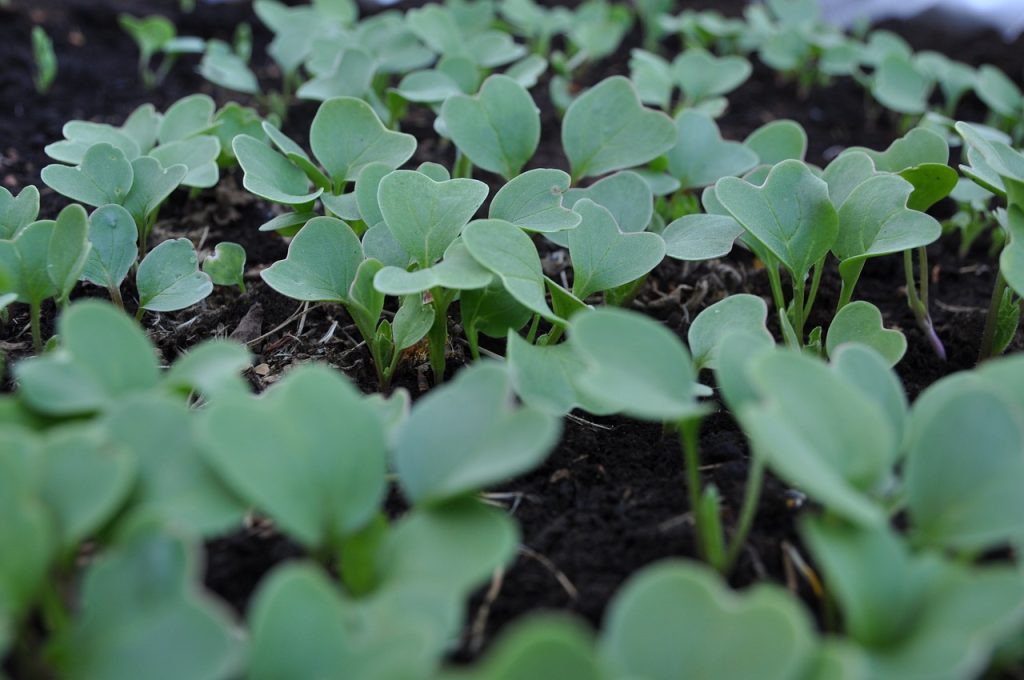
How to Care for Radishes
Watering: After planting, water the soil thoroughly to ensure adequate moisture for germination. Keep the soil consistently moist but not waterlogged throughout the growing season, as consistent moisture is essential for proper radish development.
Mulching: Apply a layer of organic mulch, such as straw or shredded leaves, around the radish plants to retain soil moisture, suppress weeds, and moderate soil temperatures.
Watering: Keep the soil consistently moist but not waterlogged throughout the growing season. Water radishes deeply whenever the top inch (2.5 centimeters) of soil feels dry, especially during dry periods or hot weather.
Thinning: Once the radish seedlings emerge, thin them to the recommended spacing to ensure proper root development. For most varieties, thin radishes to 1 to 2 inches (2.5 to 5 centimeters) apart. Use scissors to snip off the excess seedlings at soil level to avoid disturbing the roots of the remaining plants.
Fertilization: Radishes are not heavy feeders, but they benefit from a balanced fertilizer application before planting. Apply a fertilizer with a balanced NPK ratio (such as 10-10-10) according to the manufacturer’s instructions.
Harvesting Radishes
Radishes typically mature within 3 to 5 weeks after planting, depending on the variety and growing conditions. Harvest radishes when they reach the desired size and firmness, usually when they are about 1 inch (2.5 centimeters) in diameter for round varieties or when they reach the appropriate length for elongated varieties. Gently pull radishes from the soil, or use a garden knife or scissors to cut them just above the soil line.
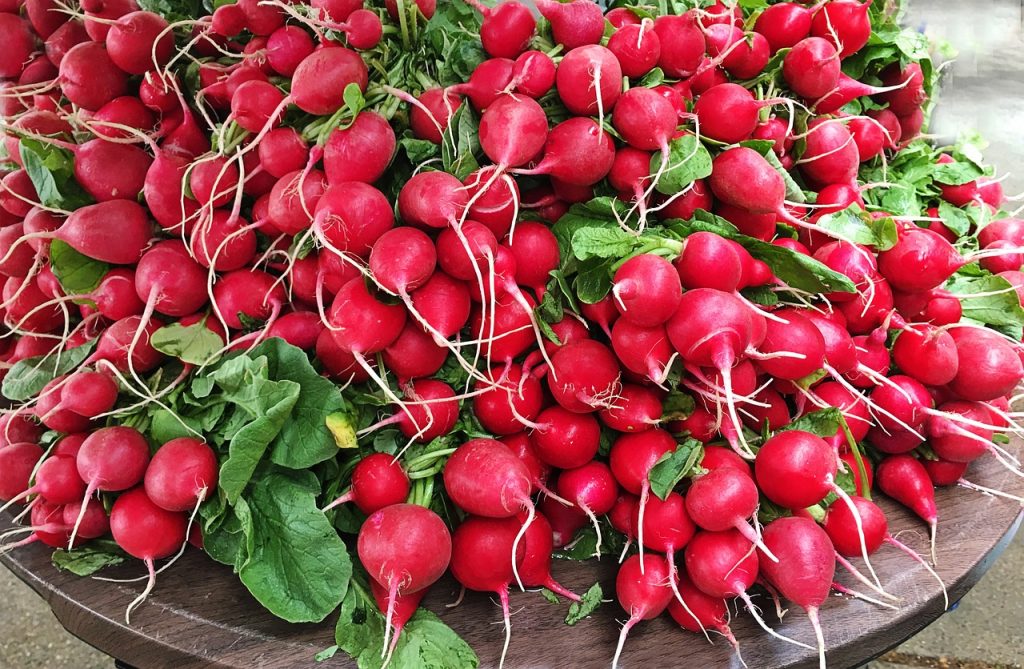
Storing Radishes
Radishes are best enjoyed fresh, but you can store them in the refrigerator for up to a few weeks. Remove the tops and store radishes in a perforated plastic bag or airtight container in the crisper drawer to maintain freshness.
Pests and Diseases
Pests that commonly attack radishes include flea beetles, aphids, and cabbage root maggots, which can damage plants. Use row covers or insecticidal soap to manage pest infestations. Practice crop rotation and good garden hygiene to minimize the risk of diseases.

